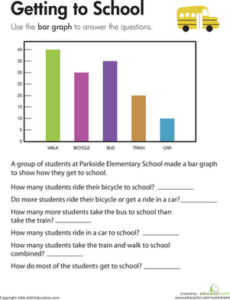Data Literacy Matters — Do We Have To Spell It Out?!
In the words of Thomas Edison, the value of an idea lies in the using of it. Yeah, I’ve used that quote a lot to talk about the value of data. Data isn’t inherently valuable. But when you use it to better understand customers or to identify bottlenecks in a process or to detect fraud or revenue leakage, then it’s valuable. More simply put, Data + Use = Value — another quote I repeat over and over.
Yet according to our new Forrester Analytics Global Business Technographics® Data And Analytics Survey, 2019, on average, only 48.3% of decisions are made based on quantitative information and analysis as compared to other more qualitative decision factors such as experience, “gut feeling,” or opinions. That number hasn’t really moved in years. Back in 2016, survey respondents even reported that 48.9% of decisions were made using quantitative analysis. We’ve really made little progress on that front over the years.
There is a glimmer of hope, however. New survey results, and anecdotal evidence from the field, tell us that data leadership makes a big difference. Organizations with data leaders report that 50.8% of decisions are made using quantitative analysis, compared to 44% in organizations without data leaders. And this year saw a jump in the number of firms appointing data and analytics leaders — 58% of organizations now have a chief data officer (CDO), up from only 51% last year. Hail the rise of the CDO and the leadership to drive an insights-driven culture. My upcoming infographic will illustrate many of the findings of our Business Technographics survey as well as a research survey on data and analytics leaders. Stay tuned.
But How Do CDOs Drive This Cultural Change — This Shift Toward Data-Driven Decisions?
They do it by solving the equation that matters most: Data + Use = Value.
Yes, organizations with CDOs do tend to invest more in their data. We’ve seen that in past research. But what they really do is increase the use of the data. Perhaps the equation should really be Data x Use = Value, because even more data or investment in data would still result in zero value if there is no data use. Yep, I think I’ll switch to that one. But for now, let’s just focus on Use, as that’s the point. CDOs drive the use of data across their organizations.
A case study I wrote a few years ago illustrates this well. At Seattle Children’s Hospital, the CDO Analytics office drives the use of data to improve patient outcomes and operations across the hospital — from reducing post-operative infection rates to increasing occupancy of hospital beds. Underlying the use of data to address these critical business issues is an effort to drive data literacy across the organization.
Data and analytics leaders launch programs to increase data literacy. They take steps to prepare, activate, and nurture an insights-driven culture. These programs include a wide range of activities from mentoring to formal training to raise the awareness and understanding of data use and value.
Data Literacy Drives Data Use
A book is only read by someone who knows how to read. A presentation I recently watched started with the fact that Gutenberg invented the printing press in 1439, democratizing printed material. Now 85% of the world can read — but it’s taken us a long time to get there. New tools for visualization and analysis have made it much easier to consume data insights in recent years. But that doesn’t mean that everyone can. It’s time to expand data literacy.
Data literacy, simply put, means the ability to read, understand, and communicate with data and the insights derived from it. Some people argue that it’s not like reading text because it requires math skills, implying a greater complexity. I disagree. To the uninitiated, reading text is just as hard as “reading” data or graphs.
 When I lived in the Central African Republic, I worked with literacy programs that started with pictures, not words. Many of the women in the programs hadn’t seen two-dimensional representations of the objects they knew in real life. How could a picture of a tree represent a real tree?
When I lived in the Central African Republic, I worked with literacy programs that started with pictures, not words. Many of the women in the programs hadn’t seen two-dimensional representations of the objects they knew in real life. How could a picture of a tree represent a real tree?  They had to learn abstraction of images before they could make the leap to text, where a word represents an object. It’s hard for us who’ve grown up with pictures to imagine.
They had to learn abstraction of images before they could make the leap to text, where a word represents an object. It’s hard for us who’ve grown up with pictures to imagine.
 In addition to learning to read as children, most of us grew up not only with pictures and words but with exercises to teach us how to read tables and graphics. Remember those exercises about missing the train? Or reading bar charts about how kids get to school?
In addition to learning to read as children, most of us grew up not only with pictures and words but with exercises to teach us how to read tables and graphics. Remember those exercises about missing the train? Or reading bar charts about how kids get to school?
I’d venture to say that most of us know how to read a bus or train schedule and interpret simple graphics, yet we’re not necessarily given all the skills we need to question assumptions, inquire about the sample sizes or how they’re represented, or apply the data from a dashboard or report to the decisions we need to make in our jobs.
It’s Time To Promote Data Literacy!
Back in 2016, we asked our research panel about their use of data and level of comfort with what they were expected to do. Mind the gap, and there was one. While the report doesn’t call out “data literacy” by name, it addresses the gap between expectations and competency and prescribes a program of formal and informal mechanisms to increase the use of data across organizations. Take a look at “Turn Data Monotony Into Data Mastery: Cultivate An Insights-Driven Culture.”
We’ve now gone back to the panel to gauge the current gap and to get input for an upcoming report on data literacy. With the use of data in decision making still stuck below 50%, it really is time to raise our game and really promote data literacy. The upcoming report will share best practices from large banks, publishing houses, governments, and hospitals — initiatives to increase data literacy as a means of promoting the use of data across industries.
Stay tuned!